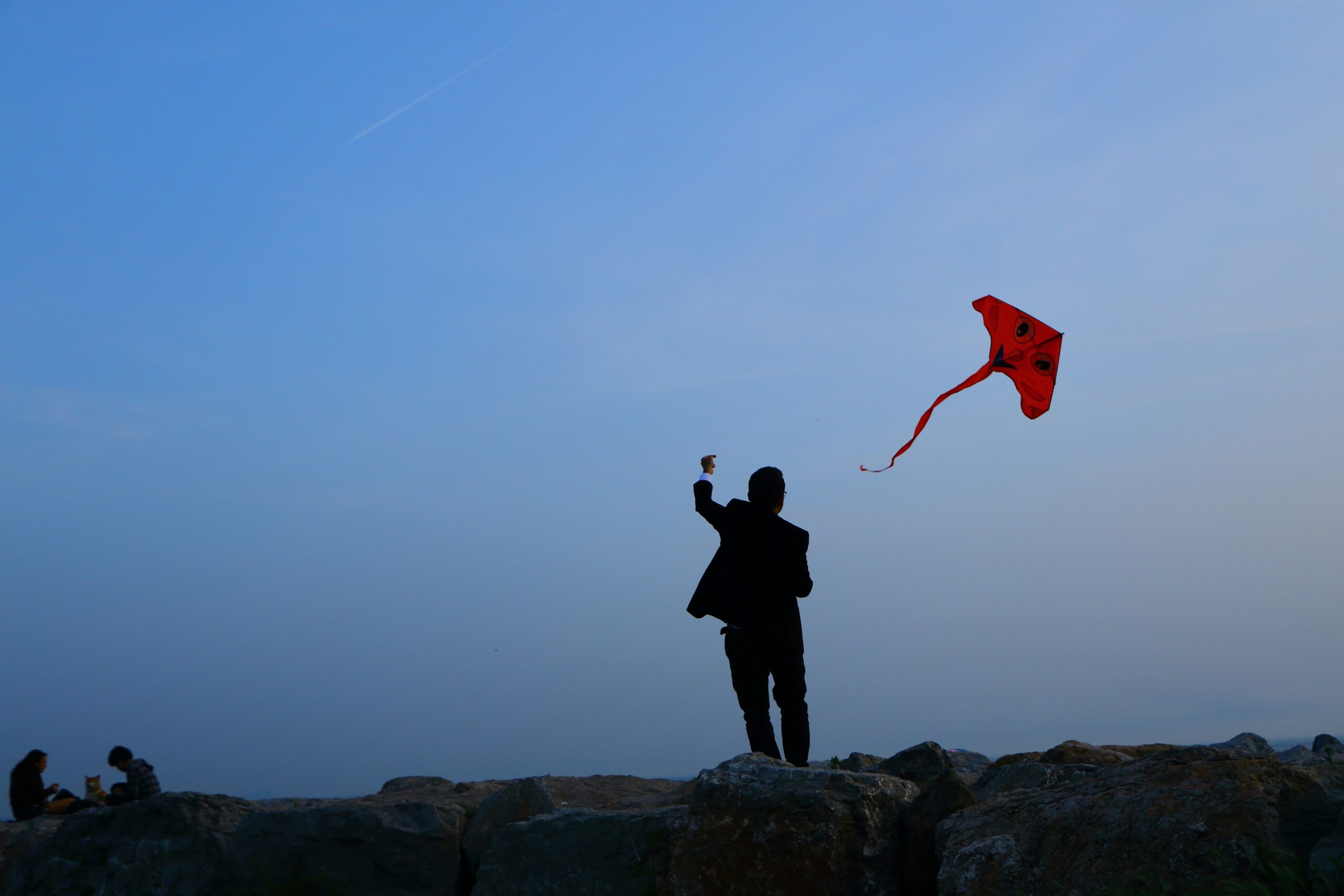
Photo by Umut Yilman via Unsplash
April is not “the cruelest month.” It is, with March, the windiest month. As such, these months are the best of the year to find or build a kite, find a grass-filled open space, and feel the delicious tug of wind stretch down from the sky, down the twine or wire suspending your kite, and straight into the clutch of your hands.
Flying a kite was the boon of my childhood growing up on the prairies of eastern and mid-state Montana. It was what every kid did when there were no tunnels to bore through mounds of snow. Any snow left from the winter was in the ditch by late March, and melting slowly while my neighborhood friends and I shopped for twine and kites with cartoon-like visages splashed across the bridles. We fastened their cross spars across the spines with enough duct tape to withstand the gales that would come lashing through the sky by high noon if not early morning. We all gulped down a big breakfast before heading out because we knew we would not be home until dinner time.
Of all the ways we immerse ourselves in the natural world, only kite-flying lets us stand in one spot and look as if we are actually doing something. “Go fly a kite!” was once the gentlest insult one person could hurl at another. It was not until I became an adult that I understood it as a term for someone who loved throwing out unserious ideas without the burden of putting them into practice. But really, “Go fly a kite!” is no insult at all. It is the reward of looking up into a sky made crystal blue by the magic of Rayleigh scattering, or silvery gray by clouds ripening with rain soon to fall. The wind might brush our cheeks during a simple walk, but only kite-flying graces us with sensations felt throughout the whole body as we hold the string(s) leashed to a kite, a creature of the sky only wind can animate.
A whole lot of Orientalist clap-trap could be written about the kite’s origins in fifth-century BC China. Is it meditative? Is it Zen? Is it the sort of curious pastime best suited for quiet, docile people too afraid to ride motorcycles at top speed on the highway when spring weather breaks? The simple truth is that flying a kite is quiet, humble fun. It is soothing to hear the wind rip across a kite’s bridle. It is exhilarating to feel the interchange between drag and thrust in one or both hands. Fishing carries the expectation that you might score a catch somewhere in a brief moment. Kite-flying is the expectation of riding the wind in dips and gusts for as long as the wind grants you its fickle presence.
Flying a kite is the simple pleasure of celebrating, in the quietest but most glorious way, winter folding into spring. For the ancient Greeks, a change of seasons was significant enough to give each its cardinal wind, the four brothers of Zephyrus, the gentle and “life-affirming messenger of spring”; Notius, the summer south wind and “destroyer of crops”; Eurus, or the east wind of autumn; and Boreas, the “devouring” wind of winter.
The kite itself has a central place in our nation’s history, too. Benjamin Franklin did not discover electricity by flying one. Rather, as articulated by writer Joe Hanson in an enlightening PBS episode of Be Smart, Franklin used a kite to demonstrate how electricity could be understood as “a giant atmospheric circuit” between the clouds and the Earth. The kite, in fact, played a more vital role in the creation of the United States than did the melodrama of the Boston Tea Party or the Boston Massacre. “If Ben Franklin doesn’t fly his kite,” Hanson says, “he doesn’t prove thunderclouds are electrified, he doesn’t become the colonial Carl Sagan, he doesn’t become King Louis’s bestest American friend, and France doesn’t help us beat the British. You hear that America? You’re here because of science!”
And rather than staring at your phone screen like a mouse in a digital cage, watching television hunched into your couch, or driving across town for an errand that could wait another day, you could be standing in an open field, spool in hand, to remind yourself how far the sky reaches into the infinite of our universe when a kite dances across its small, but endless, horizon.
